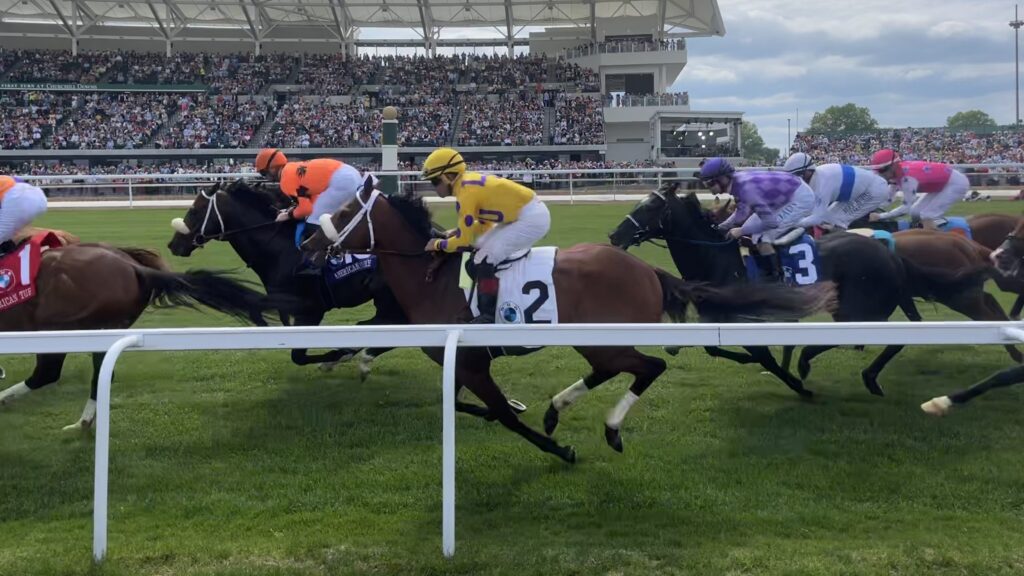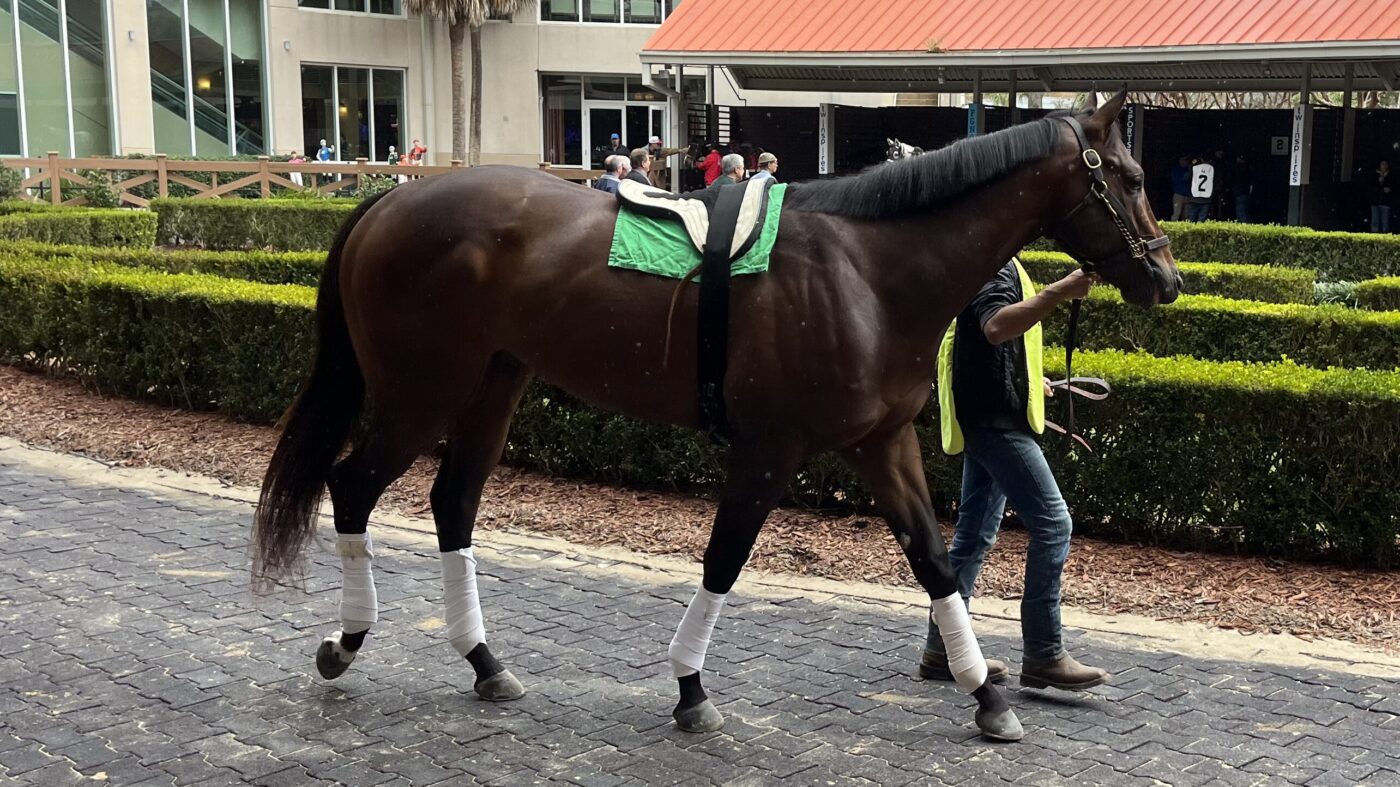Last updated: February 20, 2024
Did you know that in 2022, over $12 billion was wagered in thoroughbred horse racing, with total purses distributed reaching an unprecedented $1.25 billion? As a seasoned racehorse owner, I often discuss the sport’s facets with enthusiasts.
A common question arises: “Where does the horse racing purse money come from?” This money, crucial for fueling the sport’s passion and rivalry, originates from spectator bets, racer entry fees, and sponsorships. Join me as we delve into the financial core of horse racing, exploring how purse money not only rewards winners but also drives the sport’s thrilling competition.

Exploring the Sources of Purse Money in Horse Racing
A. Betting Revenues
- Contribution to Purse: A significant portion of the purse money comes from betting revenues. When spectators place bets on horses, a portion of each wager is allocated to future purses.
- Proportion Allocated: The exact percentage varies, but a notable portion of all bets contributes to the purse, making betting one of the primary sources of funding.
B. Television and Online Simulcast Revenues
- Role in Funding: Broadcasting rights, including television and online simulcasts, play a crucial role. Networks pay for the rights to broadcast races, and a part of these fees goes into the purse.
- Impact of Popularity: The more popular a race is, the higher the broadcasting rights fees. Major events attract larger audiences, thereby increasing the revenue from these sources.
C. Entry Fees
- Participation Costs: Every horse entered in a race typically pays an entry fee. These fees are a standard part of competitive horse racing.
- Integration into Purse: The collected entry fees are pooled into the total purse. This means that the horses competing are directly contributing to the prize they are racing for.
D. Sponsorships
- Corporate Involvement: Companies often sponsor horse races for advertising and promotional benefits. These sponsorships can be a substantial source of funding.
- Enhancing the Purse: Sponsorship funds are frequently used to increase the purse size, making the event more prestigious and attractive to top competitors.
E. Other Sources
- Additional Contributions: Apart from the main sources, racetracks and racing associations sometimes add extra funds, especially for significant races or events.
- Purpose and Impact: These additional funds are used to enhance the purse, attract more participants, and increase the race’s overall appeal and competitiveness.

How Your Wager Gets into the Purse
When you place a bet at a racetrack, your funds play a crucial role in determining the purse money. This applies to various types of bets, whether made onsite, online, or through simulcast platforms. In cases where the racetrack includes a casino, a portion of the gaming profits also contributes to the purse.
- Types of Wagering and Their Contributions:
- Live On-Track Wagering: This is the most significant contributor to the purse. Approximately 7.25% of a live on-track bet goes to the horseman’s purse, directly supporting the rewards for participating horsemen.
- Advance Deposit Wagering (ADW): ADW allows off-track betting through dedicated platforms. Roughly 4 percent of ADW wagers also contribute to the purse, providing further incentives for horsemen.
- Simulcast Wagering: Betting on races broadcasted from other tracks contributes 1.5 percent of each wager to the purse.
- Online Wagering: Although it allocates the smallest percentage to the purse, the convenience and widespread use of online platforms mean their cumulative effect still significantly contributes to the purse.
If you are interested in learning more about the basics of betting on horse racing, then check out this article.
How Purse Money is Split Between the Horses

General Distribution Factors:
- The division depends on race type, purse size, and finishing position.
- First place typically earns 60-70%, second place around 15-20%, with the rest divided among other top finishers.
Chart showing the general distribution of horse racing purses.
Innovative Payout Systems:
- Florida’s System (Since 1975): Ensures payment to all finishers, allocating 1% to horses finishing below fourth.
- Variation by Number of Participants: Distribution changes based on the number of horses in the race.
- Example: New York (2018) adjusted its payout to 55% for the winner, with varying percentages for other finishers.
Specific Race Payout Structures:
- Kentucky Derby: Historically paid top four finishers (1915-2004), now pays top five.
- Belmont Stakes: Distributes purse money to the first eight finishers.
- Breeders Cup (Since 2016): Expanded purse-earning runners from five to eight, with the last three places each receiving 1%.

Variations Across the US:
- Most of the 33 states in the US pay out to all horse entries.
- Ten states limit payouts to the top five finishers.
- Three states have diverse payout methods, including added money and starter money, affecting distribution at different tracks.
These varied payout methods influence the quality of horses entering races and ensure fair compensation.
How Do the Owner, Trainer, and Jockey Split Their Winnings?

Standard Distribution
- Owner’s Share: Typically, the owner of the winning horse receives about 80% of the total purse.
- Trainer’s Cut: The trainer responsible for preparing the horse gets around 10%.
- Jockey’s Earnings: The jockey, guiding the horse to victory, also earns approximately 10%.
Variables Affecting Distribution
- Flexibility in Distribution: The split isn’t fixed and can vary based on track rules and race terms.
- Additional Recipients: Sometimes, a portion is allocated to horse breeders or others involved in the horse’s career.
Real-World Examples
- 2023 Kentucky Derby:
- Purse: Over $3 million.
- Owner’s Earnings: $1.86 million (60%).
- Trainer and Jockey: Each received $186,000 (10%).
- Summer Sprint:
- Purse: $500,000.
- Owner’s Earnings: $350,000 (70%).
- Trainer and Jockey: Each received $52,000 (15%).
Calculating Jockey’s Pay
- Example Scenario: Jockey Bobby wins a race with a $10,000 purse.
- Payout Breakdown: Winner gets 60%, second place 20%, third 10%, and so on.
- Bobby’s Earnings: From the $6,000 winner’s share, Bobby (the jockey) gets 10%, totaling $600.
- Mount Fee: Jockeys also receive a base fee, ranging from $75 to $135, regardless of the race outcome.
The distribution of purse money in horse racing varies but consistently rewards the hard work of the key players in the sport.

Challenges and Outlook in Funding Purse Money in Horse Racing
Current Challenges in Funding
- Economic Fluctuations: The global economic climate significantly impacts betting revenues and sponsorships, primary sources of purse money.
- Changing Betting Habits: With the rise of online gambling, traditional on-track betting, a major purse contributor, faces challenges.
- Regulatory Hurdles: In some regions, stringent gambling laws and changing regulations can impact the flow of funds into horse racing.
- Sponsorship Volatility: Economic downturns or shifts in corporate priorities can lead to reduced sponsorship funding.
Predictions and Trends for the Future
- Digital Transformation: Increased online and mobile betting platforms could lead to a more diversified and stable betting revenue stream.
- Globalization of the Sport: As horse racing gains popularity in new markets, it could open up additional funding sources, particularly from international sponsorships and media rights.
- Innovative Financing Models: There may be a shift towards more creative financing solutions, like crowdfunding or private investments, to supplement traditional funding methods.
- Focus on Responsible Gambling: With growing awareness of responsible gambling, the industry might see more regulated and sustainable betting practices, potentially impacting purse sizes.
- Enhanced Media Deals: The growing popularity of streaming services offers potential for lucrative media deals, which could become a significant source of purse money.
- Breeding and Sales Innovations: Advances in breeding technology and global sales platforms could increase the value of racehorses, indirectly boosting purse money through entry fees and ownership investments.
Impact of Purse Money on Horse Racing

Motivation for Participants
- Incentive for Effort: Purse money acts as a significant incentive for owners, trainers, and jockeys, encouraging them to invest time and resources in preparing horses for races.
- Driving Force: The prospect of earning a share of the purse motivates participants to strive for excellence, enhancing their performance.
Enhancing Race Quality and Competition
- Attracting High-Quality Participants: Larger purses tend to attract higher-caliber horses, experienced jockeys, and skilled trainers.
- Elevating Competition: With more at stake, races become more competitive and exciting, improving the overall quality of the event.
- Broader Impact: The presence of a substantial purse elevates the sport, making it not just a competition for rewards but a showcase of passion and skill.
Purse money in horse racing is a key element that goes beyond monetary rewards. It fuels the passion and dedication of participants, elevates the quality of competition, and contributes to making horse racing the thrilling spectacle it is known for.

FAQs for “The Dynamics of Purse Money in Horse Racing”
What is purse money in horse racing?
Purse money is the prize money awarded to the winners and other top finishers in a horse race. It serves as a major financial incentive for participants.
How is purse money generated in horse racing?
Purse money primarily comes from various sources such as betting revenues, television and online simulcast revenues, entry fees, sponsorships, and additional contributions from racing associations and tracks.
Who receives the purse money in a horse race?
The purse money is typically distributed among the owner, trainer, and jockey of the winning horse, with the largest share going to the owner.
Does the size of the purse affect the quality of a horse race?
Yes, larger purses tend to attract higher quality horses, experienced jockeys, and skilled trainers, thereby enhancing the competition and the overall standard of the race.
Can the distribution of purse money vary from race to race?
Yes, the distribution of purse money can vary based on the race’s rules, the track’s policies, and the specific terms of certain races.

Conclusion: The Essence of Purse Money in Horse Racing
Purse money, a vital financial incentive in horse racing, not only rewards winners but also shapes the sport’s competitive nature. It arises from varied sources like betting, TV and online revenues, entry fees, sponsorships, and contributions from racing bodies, making horse racing both lucrative and appealing.
The way purse money is distributed impacts the quality and standard of races, with larger purses drawing top-tier horses and talent, thereby boosting the sport’s prestige. Future trends suggest an evolution in purse financing, influenced by digital betting, global expansion, and new financial models, adapting to economic shifts and technological progress.
For anyone involved or interested in horse racing, understanding purse money’s role is crucial to appreciating the sport’s allure and ongoing development.
Join the Conversation:
- I encourage you to share your thoughts, experiences, or questions in the comments section below. Let’s create a community of informed and passionate racehorse owners.
- Don’t forget to share this article with your network. Use the social share buttons to spread the knowledge and love for racehorse ownership.
Thank you for reading, and I look forward to connecting with you, whether it’s through our newsletter, direct communication, or in the comments section. Here’s to the thrilling journey of racehorse ownership!
References and Further Reading
- The Jockey Club: An organization dedicated to the improvement of Thoroughbred breeding and racing. Visit The Jockey Club
- Racing Post: A British daily horse racing, greyhound racing, and sports betting newspaper. Visit Racing Post
- Equibase: Provides comprehensive horse racing statistics and reports. Visit Equibase
- The Economist: For economic analyses and trends impacting various industries, including sports. Visit The Economist
- Sports Business Journal: For insights into the business side of sports, including horse racing. Visit Sports Business Journal
- “Betting on Horse Racing For Dummies” by Richard Eng – Provides an accessible introduction to betting, a key source of purse money.

About the Author: Miles Henry
Lifelong Horseman | Racehorse Owner | Published Author
Miles Henry brings over 25 years of hands-on experience training and owning Thoroughbred racehorses. Raised with Quarter Horses and Appaloosas, he’s spent a lifetime learning from horses—on the track, in the barn, and in the field. Today, he runs a small but successful racing stable in Louisiana and shares real-world insights on HorseRacingSense.com, helping horse owners, fans, and bettors navigate the sport with confidence.
📚 Books: View Miles’s books on Amazon »
🎧 Podcast Guest: Animal Tales Ep. 32 |
YouTube Interview
📩 Newsletter: Sign up for racing tips and horse care advice »
🔗 Follow Miles:
Twitter |
Facebook |
YouTube

